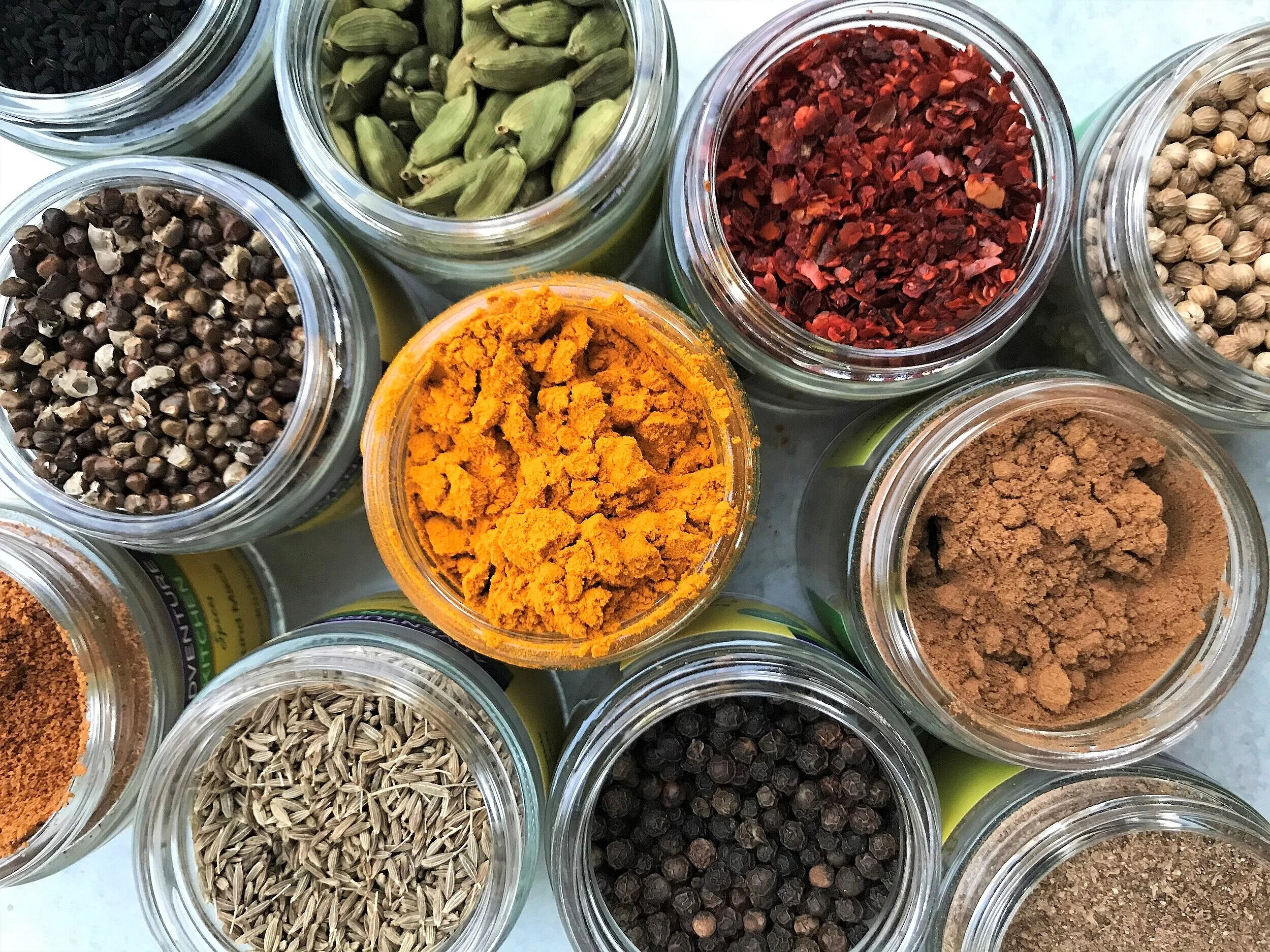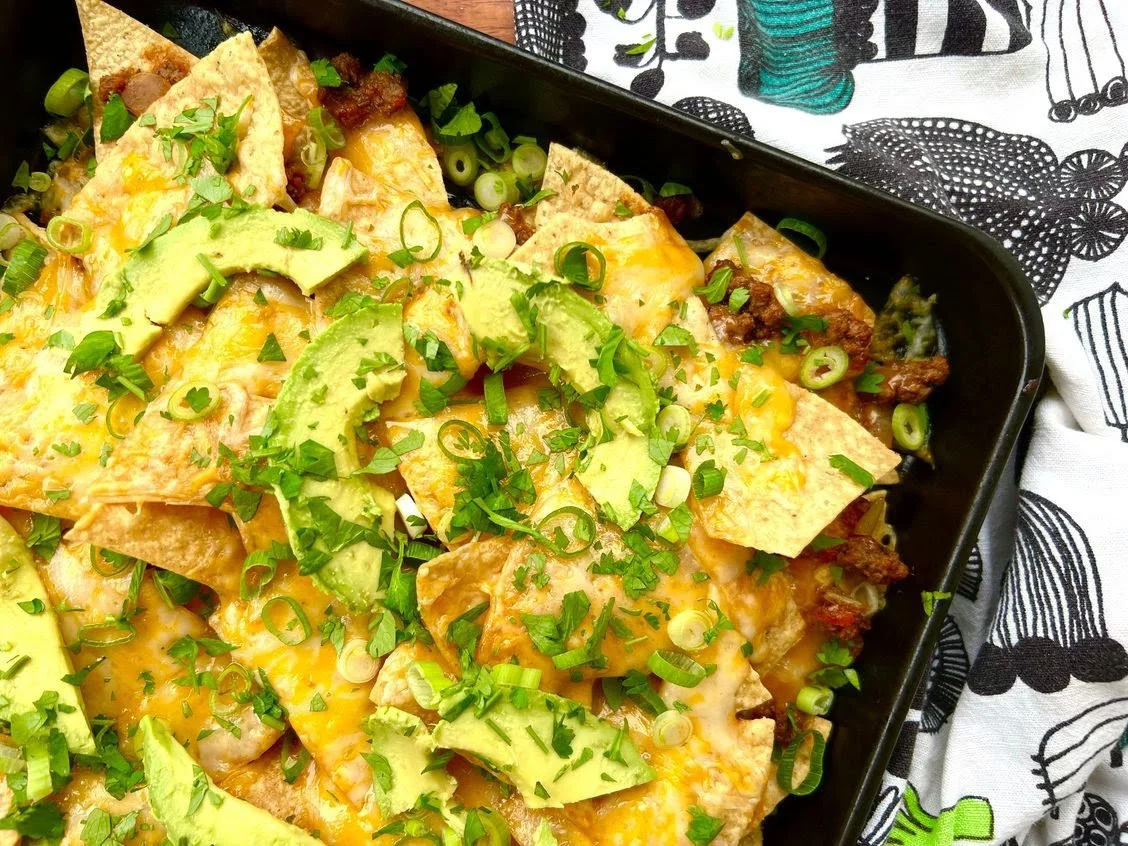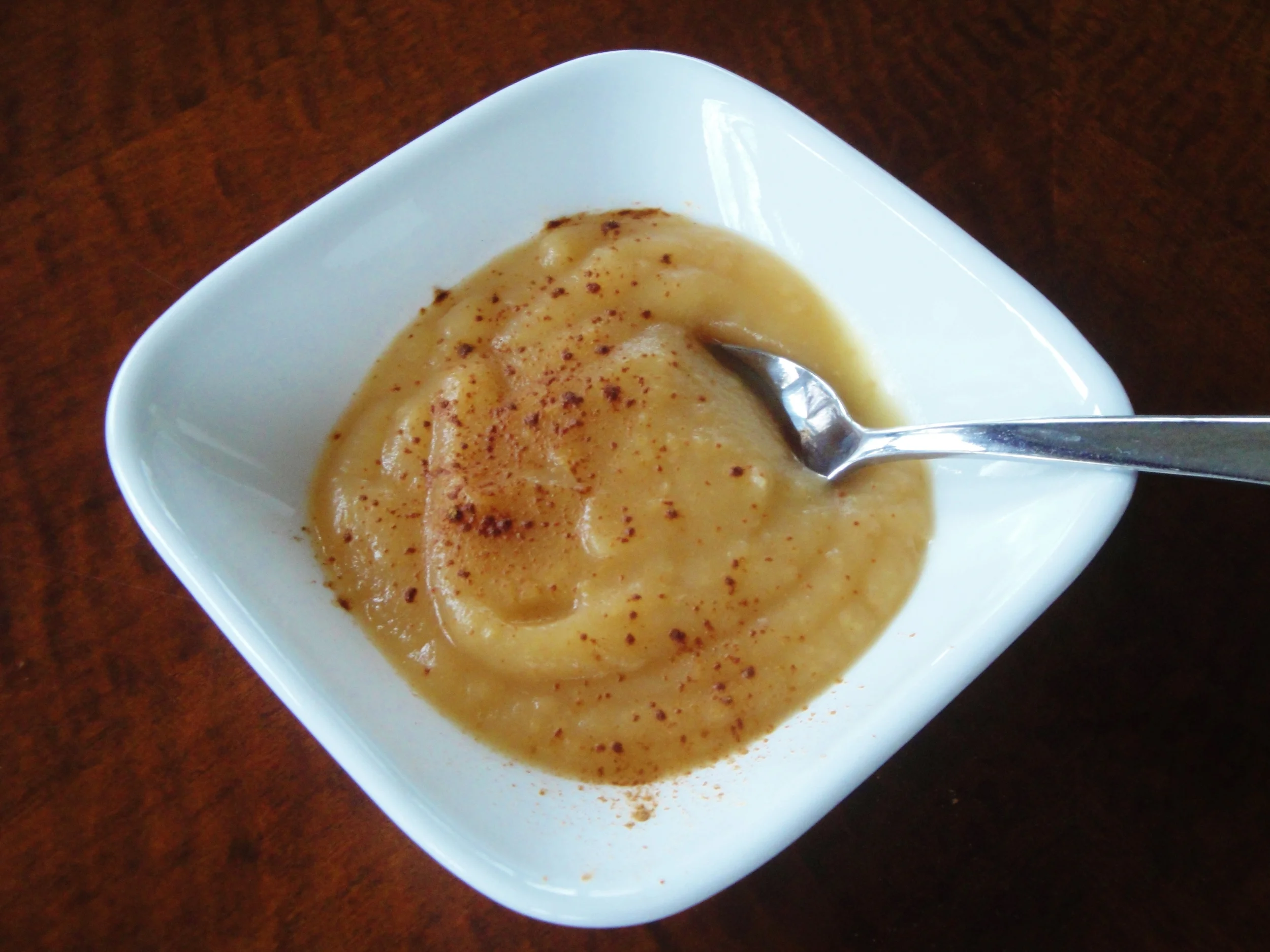How to Get the Most from Your Spice Cabinet
Lynley Jones
How to choose the best spices, how and where to store them, when to replace them, and how to get the most out of what you have.
You, my brilliant fellow-cook, make amazing food. And here’s the thing: your cooking deserves a spice cabinet that can deliver. If your herbs and spices are not fragrant flavor-bombs, then you’re going to want to change things up a bit. Here are some guidelines for maximum deliciousness:
First, Out with the Old
The fact of the matter is that yes, it’s true: fresh spices really are waaaaay better than old ones. Every time a fresh shipment of spices comes in around here, we are blown away by the fragrance. One sniff, and we can’t wait to start cooking.
Black peppercorns photographed in the Adventure Kitchen. We recommend you buy whole peppercorns and grind them yourself. Pepper grinders are inexpensive, and you can grind just what you need, fresh for each recipe. If you don’t have a pepper grinder, we can grind them fresh for you.
At their peak, spices are fresh and fragrant enough to fill you with inspiration. Ideally, the aroma should leap out at you as soon as you take off the lid. One whiff will excite you. A tiny taste will tantalize you.
How to Decide when to Replace Spices
Spices don’t actually “go bad” in a way that can make people sick, but they lose flavor over time. If you keep them long enough in poor conditions, and they’ll become nothing but colorful, flavorless powder. To help you decide whether your spices are past their prime, here are some factors to consider:
How do they smell?
Take the lid off and sniff. Can you smell anything? If not, that’s a strong sign they should probably go.
Where did you get them?
At the typical grocery store, spices often sit on the store shelf for many months before being purchased. Prior to that, they were in transit, and prior to that they were stored in a warehouse, and possibly another warehouse prior to that. So they were likely bottled a year or two before you bought them, and they may have been ground some time before that. Since time is the enemy, the whole grocery-store supply chain is a recipe for less-than-amazing spice freshness.
On the other hand, if you bought your spices from a smaller, specialty supplier, chances are very good they were fresher the day you brought them home. Small businesses deal in smaller quantities and move product faster, and their business depends on quality so it’s a good bet that they probably pay close attention to freshness.
How long have you had them?
No matter where you got your spices, if they’ve been sitting in the back of the cabinet for awhile, they’ve probably lost a lot of flavor. If you can’t remember when you bought them, it’s probably time for a fresh start.
How have they been stored?
A close-up of our Sumac and Sage Seasoning Blend in the Adventure Kitchen. If you use seasoning blends (like ours, or any other), you should use them quickly! Since they’re made with ground spices, they are freshest and most flavorful when you first purchase them.
Heat, light and oxygen will all destroy the flavor of spices. So if they’ve been stored above the stove, or on the kitchen counter, they’ve probably lost flavor. Spices last longest in a cool, dark, dry place.
Have they been opened? Jars that have never been opened will last longer, since the spices haven’t been exposed to oxygen. A half-used jar of spices that you can’t remember buying is a very good candidate for replacement.
How Long to Keep Spices
Following are rough guidelines for the shelf life of spices. The time frames are given in ranges, because the quality of any spice will depend on all the factors above. For example, an unopened jar from a good source that has been stored in a cool, dark, dry place should last through the end of the range, and maybe even longer! But a half-used jar sitting on your kitchen counter may barely limp to the beginning of the range.
Lifespan of various spices and seasonings:
Salt and sugar: forever
Whole dried chiles: 3-5 years (or more)
Whole black peppercorns: 2-5 years (or more)
Other whole spices: 2-4 years
Infused/flavored/smoked salts and sugars: 1-2 years
Herbs: 1-2 years
Ground spices: 6 months - 2 years
What do Do With Old Spices
If your spices have absolutely no taste or flavor, the best thing to do is to throw them out and start fresh. But if the flavor has simply faded and you can’t stand the waste of tossing them (I hear you!), you can use them up by adding double or triple (or maybe more!) the amount of spices your recipe calls for. Also, if you smash them in a mortar and pestle or rub them between your fingers before adding them to your dish, you’ll release more of the flavor.
Guide to Buying Spices
When it’s time to buy fresh spices, here are some suggestions:
Consider the source
Our spices all lined up at the farmers market. Aren’t they pretty?
The whole point of spices is flavor, so find a source you trust for the most flavorful spices. As I mentioned earlier, small businesses buy in smaller quantities and move product more quickly, and if they are passionate about quality, they’ll probably be a great source for the best, freshest spices.
Don’t buy in bulk
Buy as much as you think you might reasonably use within a year, and then use them! For ground spices and herbs, consider buying in smaller containers that you’ll replace more often.
Look for dates, or write your own
Most thoughtful spice merchants will include a date on the jar - either a suggested use-by date, or the date the spices were ground or jarred. (We hand-write a “best by” date on every jar when we fill it.)
If your spices are missing a date, grab a Sharpie and write the date of purchase on the jar yourself. Then later, you’ll be able to use the guide above to know when to consider tossing it.
Buy them whole, grind them yourself
Whole spices have a much longer shelf life than ground spices. As soon as spices are ground, they’re fully exposed to oxygen and light, and begin to lose flavor. Freshly-ground spices are wonderful, so consider buying whole and grinding them as you go for the freshest flavor.
How to Store Your Spices
Keep them handy
Keeping your spices near where you’re cooking will make them much easier for you to grab and use frequently.
Keep them cool, dark and dry
A kitchen cabinet away from your stove is usually the best option. A drawer is nice, so that you can see all the spices you have and find what you’re looking for more easily.
Keep them out of the fridge and freezer
I recently organized my spice drawer and turned the jars upside down so I can easily see what’s inside.
For a lot of reasons, the refrigerator and freezer are terrible environments for spice storage. They’re humid, and as the spices move back and forth between your warm kitchen and the fridge or freezer, condensation will form inside the jar and can harm the spices. Whole spices may become a bit mushy from the humidity and/or ice crystals, and spices can also pick up strange flavors from other foods.
Keep them organized
Try to store spice jars in a way that lets you see their names and quickly find what you’re looking for. Another idea is to store them upside down, so you can see what is inside each jar and find it more quickly.
Keep them where you’ll use and enjoy them!
For some of us, it makes us happy to see all our spice jars with their endless possibilities! And for some cooks, spice jars that are hidden away in a cabinet may be forgotten, rather than used. So if either of these describes you, then you might want to consider breaking all the rules and storing them out in your kitchen where they’re visible! Or you may choose to store the frequently-used spices out on the counter, and the others in a cabinet. If this is you, you might want to buy smaller jars to keep visible and use quickly.
How to Show Off Your Spices
Mortar and Pestle - your new best friends
Our whole cumin seeds in my mortar and pestle. Lightly crushing them like this releases an unbelievable aroma!
As I mentioned before, one trick to keeping spices fresh is to buy them whole and grind them yourself. A mortar and pestle are inexpensive and ridiculously handy for doing exactly that. It might seem old-fashioned, but they make it really easy to quickly grind up whatever spice you need, and they couldn’t be simpler to clean (quick and easy with soap and water). The pestle (the part you hold in your hand) is weighted, so it does half the work for you. You can often go from whole spice to ground spice in less than a minute, depending on how much you need for whatever you’re making. I have two: one very small one, if I need just a pinch of something; and one larger one, for grinding larger amounts.
Electric spice grinder
If you need to grind up a larger volume of spices, or if you need a really fine powder, then an electric spice grinder can be useful.
Toasting and blooming
Toasting and blooming are two ways to release or enhance the flavor of spices to be used in cooking.
To toast spices, toss them in a dry pan over medium/low heat on the stove. You’ll notice the fragrance as you do this. Stop when the spices start to change color - if you go too far, you’ll lose the nuanced flavor of the spice and end up with bitterness.
A close-up of spices ready for cooking: (clockwise) nigella seeds, ground fenugreek and Ethiopian black cardamom.
To bloom spices, briefly saute them in oil before adding the other ingredients to the dish. The idea is that you are infusing the oil with the flavor of the spice, and in some cases (eg with whole spices), you’re giving the spice a bit of fried flavor as well.
Flavored oils
In the pre-pandemic days of yore (fingers crossed we’ll get back there eventually!), we used to combine spices in light olive oil for customers to taste with a piece of torn bread. This is a fantastic way to show off your spices, and makes for a simple appetizer as well. You can use a spice blend for this (our Sumac and Sage Seasoning blend was always a big hit), or you can combine spices on your own that work well together (some of our favorites: smoked paprika + cumin / turmeric + cumin + black pepper / Aleppo pepper + salt). Pro tip: always include a pinch of salt to help the flavors come together.
The flavored oil also makes a great ingredient for salad dressing and other cooking.
Recipes to cook with your spices
Once you have a cabinet full of amazing spices, you’re going to want to cook with them! Here are some of our most popular recipes featuring our spices, to get you started:


















Scallions in a quick pickling sauce infused with garlic and ginger and spiked with gochugaru. A nice accompaniment to steak, veggies, burgers, rice bowls or anything on the grill.